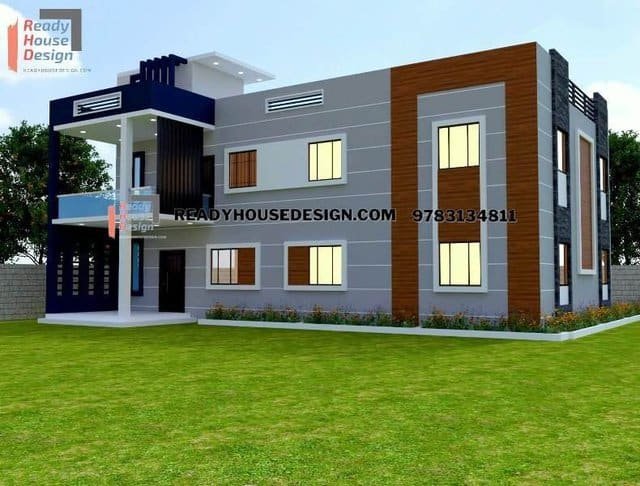village house construction in India
Embracing Tradition: The Art of Village House Construction in India
India, with its rich cultural diversity and timeless traditions, has a unique approach to village house construction that is deeply rooted in local craftsmanship, sustainability, and a harmonious connection with nature. In this exploration, we delve into the nuances of constructing houses in Indian villages, examining the traditional methods, materials, and cultural considerations that shape these rural abodes.

Architecture Reflecting Culture:
1. Vernacular Architecture:
Village house construction in India is a celebration of vernacular architecture, where design is influenced by climate, topography, and cultural practices specific to each region. Traditional dwellings showcase a remarkable blend of functionality and aesthetics.
2. Sustainable Design:
Sustainability is inherent in village house construction. Buildings are often designed to maximize natural ventilation, utilize locally available materials, and adapt to the region’s climatic conditions. The result is a sustainable and energy-efficient living space.
3. Courtyard Design:
Many village houses are organized around a central courtyard. This design facilitates social interactions, provides natural light to the interiors, and serves as a multifunctional space for various household activities.
Construction Methods:
1. Mud and Thatch Construction:
Mud and thatch remain popular building materials in village construction. Cob and adobe techniques involve creating walls from a mixture of mud, straw, and sometimes dung. Thatched roofs, crafted from locally sourced materials like straw or palm leaves, provide insulation and are well-suited to the Indian climate.
2. Stone Masonry:
In regions with abundant stone resources, houses are often constructed using stone masonry. The use of dry-stone techniques, where stones are stacked without mortar, is a traditional and sustainable method that allows for natural ventilation.
3. Bamboo and Timber Construction:
Bamboo and timber play a crucial role in village house construction. Lightweight and flexible, bamboo is used for walls, roofing, and even furniture. Timber, sourced from nearby forests, is employed for structural elements, creating a symbiotic relationship between the built environment and the surrounding nature.
4. Brick Construction:
In some villages, fired or sun-dried bricks are used for building houses. These bricks are often made locally, reducing transportation costs and promoting local craftsmanship. The use of bricks allows for more intricate designs and provides durability.
Cultural Considerations:
1. Family and Community Living:
Village houses are designed to accommodate extended families. Spaces are often multifunctional, with rooms serving various purposes. The emphasis is on communal living, fostering strong family ties and a sense of community.
2. Ritual Spaces:
Incorporating spaces for rituals and ceremonies is integral to village house design. A designated area or room for prayer and religious activities reflects the spiritual values embedded in the culture.
3. Colors and Artwork:
Vibrant colors adorn the exteriors of many village houses, reflecting the lively and expressive nature of Indian culture. Intricate artwork, often hand-painted, embellishes walls and facades, adding a distinctive charm to the architecture.
Challenges and Innovations:
1. Modernization Impact:
The influx of modern construction materials and techniques poses challenges to traditional village house construction. While concrete and steel offer durability, there is a delicate balance to strike between modernization and preserving cultural heritage.
2. Sustainability Initiatives:
Recognizing the importance of sustainable practices, some villages are embracing eco-friendly initiatives. This includes promoting rainwater harvesting, solar energy utilization, and the revival of traditional construction methods with a modern twist.
3. Skill Revival:
Preserving traditional craftsmanship is vital for the continuity of village house construction. Initiatives focused on skill development and the passing down of artisanal knowledge help ensure that ancient construction techniques are not lost to time.
Case Studies:
1. Channapatna, Karnataka:
Known for its traditional toy-making industry, Channapatna in Karnataka also boasts unique village houses. Mud and thatch construction, coupled with vibrant colors and local motifs, characterize the dwellings. The use of sustainable materials aligns with the community’s commitment to preserving its cultural identity.
2. Kutch, Gujarat:
In the arid landscape of Kutch, village houses showcase the beauty of vernacular architecture. Mud and thatch, along with intricately carved wooden doors and windows, create a visual spectacle. The construction adapts to the harsh climate, providing shelter that is both functional and aesthetically pleasing.
Future Perspectives:
1. Sustainable Innovations:
The future of village house construction in India is poised for sustainable innovations. This includes integrating eco-friendly technologies, exploring alternative materials, and incorporating modern design principles while respecting traditional aesthetics.
2. Community-Led Development:
Community-led initiatives that prioritize local needs and traditions are gaining prominence. Involving villagers in the construction process ensures that the houses are reflective of their cultural identity and address practical requirements.
3. Architectural Conservation:
Preserving traditional architecture is crucial for maintaining the unique character of Indian villages. Architectural conservation efforts aim to document, protect, and revitalize traditional building techniques, ensuring they continue to thrive.
Conclusion:
Village house construction in India is a testament to the deep-rooted connection between architecture, culture, and the environment. It reflects a sustainable and community-centric approach that has sustained generations. As the country navigates the complexities of modernization, there is a growing awareness of the need to balance progress with the preservation of cultural heritage. The future of village house construction holds the promise of harmonizing tradition with innovation, creating spaces that not only stand as shelters but also as living embodiments of India’s diverse and enduring cultural tapestry.

